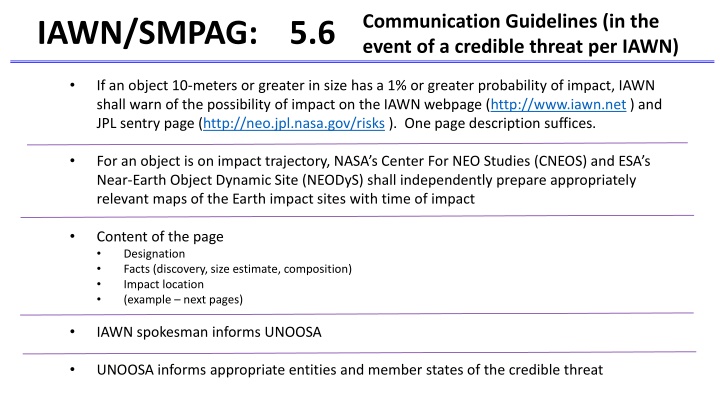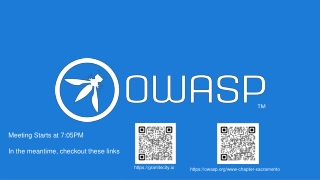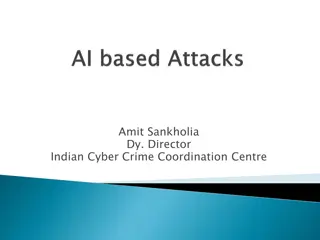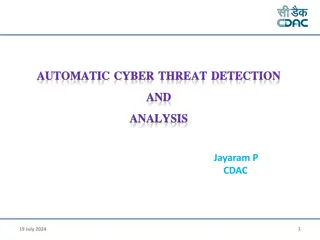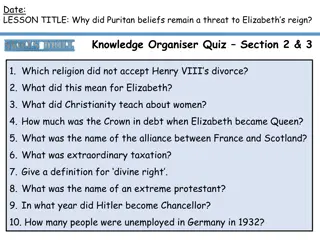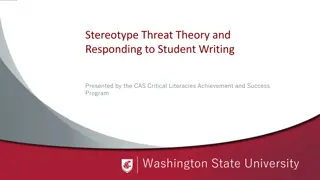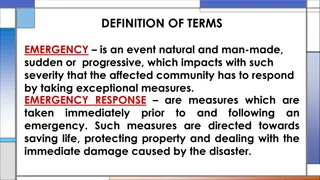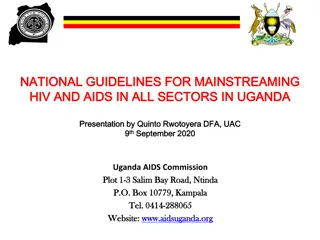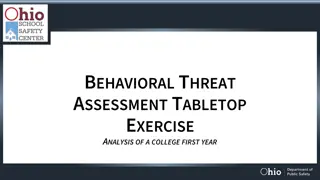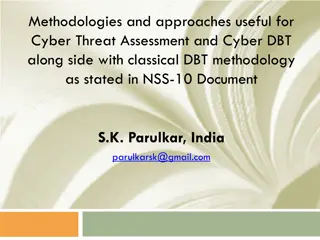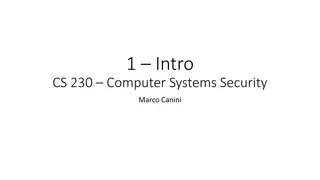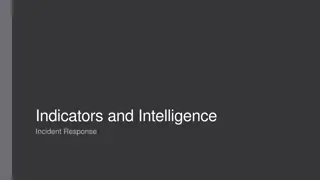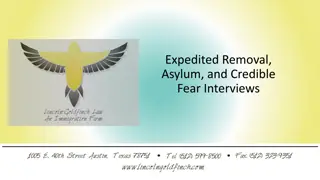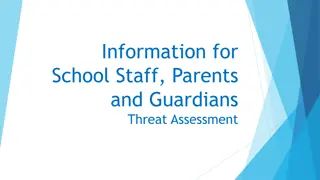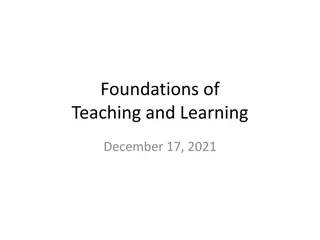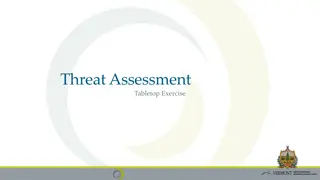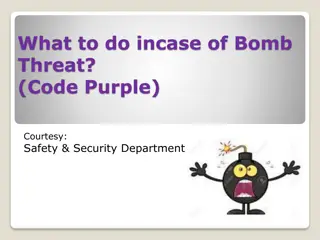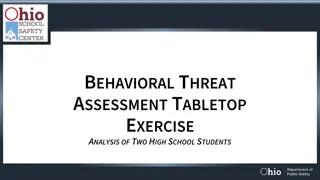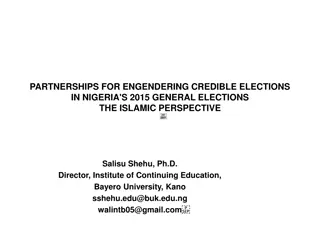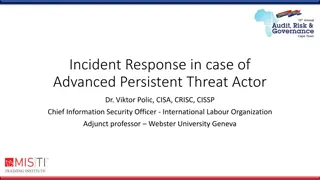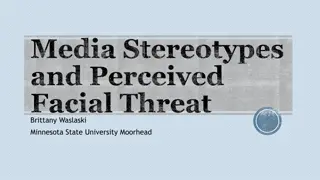Communication Guidelines for Credible Threat Response
In the event of a credible threat identified by IAWN, specific communication protocols are outlined. These involve warnings on designated webpages, preparation of impact site maps, and dissemination of information to relevant entities. Examples and notification sheets provide insights into the process of addressing potential impact scenarios posed by near-Earth objects.
Download Presentation

Please find below an Image/Link to download the presentation.
The content on the website is provided AS IS for your information and personal use only. It may not be sold, licensed, or shared on other websites without obtaining consent from the author.If you encounter any issues during the download, it is possible that the publisher has removed the file from their server.
You are allowed to download the files provided on this website for personal or commercial use, subject to the condition that they are used lawfully. All files are the property of their respective owners.
The content on the website is provided AS IS for your information and personal use only. It may not be sold, licensed, or shared on other websites without obtaining consent from the author.
E N D
Presentation Transcript
Communication Guidelines (in the event of a credible threat per IAWN) IAWN/SMPAG: 5.6 If an object 10-meters or greater in size has a 1% or greater probability of impact, IAWN shall warn of the possibility of impact on the IAWN webpage (http://www.iawn.net ) and JPL sentry page (http://neo.jpl.nasa.gov/risks ). One page description suffices. For an object is on impact trajectory, NASA s Center For NEO Studies (CNEOS) and ESA s Near-Earth Object Dynamic Site (NEODyS) shall independently prepare appropriately relevant maps of the Earth impact sites with time of impact Content of the page Designation Facts (discovery, size estimate, composition) Impact location (example next pages) IAWN spokesman informs UNOOSA UNOOSA informs appropriate entities and member states of the credible threat
Example Notification Sheet A small asteroid, provisionally designated 2017 XYZ) was discovered on 31 Nov 2017 by Pan-STARRS located atop Halekakala (Maui), Hawaii and reported to the Minor Planet Center. Additional follow-up observations by the Catalina Sky Survey, the University of Hawaii 2.2-meter, and the Large Altazimuth Telescope (BTA-6) 6-meter telescopes have confirmed the orbit of 2017 XYZ. Basic facts RE: discovery, follow-up, etc. 2017 XYZ is observed to be approximately 120 meters in size. Based on current calculations, the asteroid has a 4% probability of impact will be on 31 Sep 2028 in the Eastern Pacific Ocean near the northern coast of Mexico at 13:13 UTC. Current predicted details Future observations are planned with the planetary radar systems located in Goldstone and Arecibo on 1 April 2018. Further radar observations will precisely determine the orbit of 2017 XYZ. Next Observations IAWN & SMPAG (trusted sources of information, etc.) The International Asteroid Warning Network (IAWN) has informed the Space Mission Planning Advisory Group (SMPAG), currently chaired by the European Space Agency.
Notification Particulars (to be agreed upon by IAWN members) Asteroid name/designation Asteroid characteristics size (metric and standard), composition (if known), brightness/albedo, etc. Observational history (discovery information, follow-up) Prediction of asteroid trajectory including closest distance to Earth (surface, not center) and date and time of close approach. A colloquial (non-statistical) qualifier of impact risk Hazard to space assets (if any) Future observations Visibility, visual magnitude (i.e., amateur astronomers be able to see the object) Consistent terms of measurement: size rather than diameter of object, brightness/albedo of object, etc. Authoritative source(s) for more information (i.e., IAWN, SMPAG)
CNEOS Relevant Map This type of map or what we ve used in TTX (risk corridor)
NEO Impact Alert Process Survey, Detect, & Report Publish/ Update Results Correlate, Determine Rough Orbit Observations and Update Orbit Radar Planetary Defense Officer (NASA) Possible New PHO? No Resolve Result Differences Publish Results Iterate Routine Processing Publish Results Yes Yes Alerts to PDCO MPC - PHO of interest MPC -possible close approach CNEOS - reports potential for impact CNEOS -publishes probability of impact No Impact Still Possible? Potential Impact? No Precision Orbit and Follow Up Observations Yes Survey Systems Minor Planet Center Ctr NEO Studies @ JPL * * In parallel with NEODyS
NEO Impact Alert Process Planetary Defense Officer (NASA) Notional IAWN SMPAG (supported by ESA & NASA) Notional Notional briefed to member states SMPAG members convene to formulate recommendations UN SMPAG member agencies vet, and agree to, recommendations UN announcement (UNCOPUOS, UNOOSA) SMPAG recommendations Member states inform UN of recommended actions to be taken Member states agree to support SMPAG recommendations YES Action NO
Overview for NEO Threat Response (very simplified) United Nations COPUOS/OOSA UN Office of Outer Space Affairs Committee on Peaceful Uses of Outer Space Inform in case of credible threat Parent Government Delegates Potential deflection mission plans Determine Impact time, location and severity Space Missions Planning Advisory Group (SMPAG) International Asteroid Warning Network (IAWN) Observers, analysts, modelers Space Agencies and Offices 8
